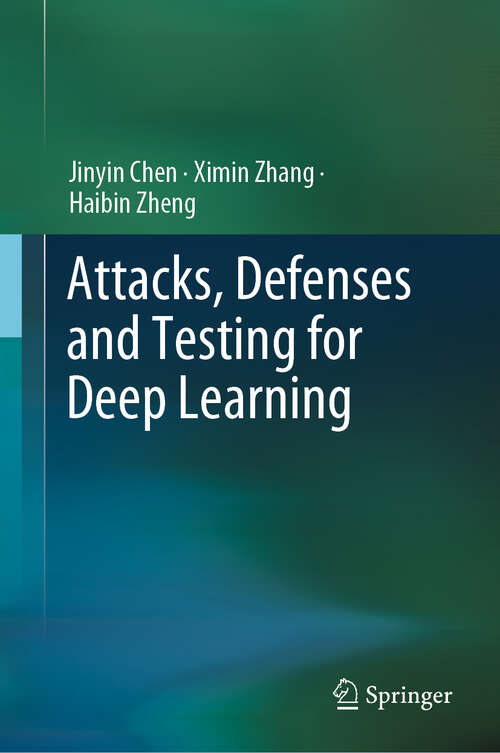Attacks, Defenses and Testing for Deep Learning (2024)
By: and and
Sign Up Now!
Already a Member? Log In
You must be logged into Bookshare to access this title.
Learn about membership options,
or view our freely available titles.
- Synopsis
- This book provides a systematic study on the security of deep learning. With its powerful learning ability, deep learning is widely used in CV, FL, GNN, RL, and other scenarios. However, during the process of application, researchers have revealed that deep learning is vulnerable to malicious attacks, which will lead to unpredictable consequences. Take autonomous driving as an example, there were more than 12 serious autonomous driving accidents in the world in 2018, including Uber, Tesla and other high technological enterprises. Drawing on the reviewed literature, we need to discover vulnerabilities in deep learning through attacks, reinforce its defense, and test model performance to ensure its robustness. Attacks can be divided into adversarial attacks and poisoning attacks. Adversarial attacks occur during the model testing phase, where the attacker obtains adversarial examples by adding small perturbations. Poisoning attacks occur during the model training phase, wherethe attacker injects poisoned examples into the training dataset, embedding a backdoor trigger in the trained deep learning model. An effective defense method is an important guarantee for the application of deep learning. The existing defense methods are divided into three types, including the data modification defense method, model modification defense method, and network add-on method. The data modification defense method performs adversarial defense by fine-tuning the input data. The model modification defense method adjusts the model framework to achieve the effect of defending against attacks. The network add-on method prevents the adversarial examples by training the adversarial example detector. Testing deep neural networks is an effective method to measure the security and robustness of deep learning models. Through test evaluation, security vulnerabilities and weaknesses in deep neural networks can be identified. By identifying and fixing these vulnerabilities, the security and robustness of the model can be improved. Our audience includes researchers in the field of deep learning security, as well as software development engineers specializing in deep learning.
- Copyright:
- 2024
Book Details
- Book Quality:
- Publisher Quality
- ISBN-13:
- 9789819704255
- Related ISBNs:
- 9789819704248
- Publisher:
- Springer Nature Singapore
- Date of Addition:
- 07/05/24
- Copyrighted By:
- The Editor
- Adult content:
- No
- Language:
- English
- Has Image Descriptions:
- No
- Categories:
- Nonfiction, Computers and Internet, Mathematics and Statistics
- Submitted By:
- Bookshare Staff
- Usage Restrictions:
- This is a copyrighted book.
Reviews
Other Books
- by Jinyin Chen
- by Ximin Zhang
- by Haibin Zheng
- in Nonfiction
- in Computers and Internet
- in Mathematics and Statistics
